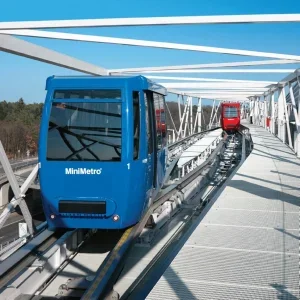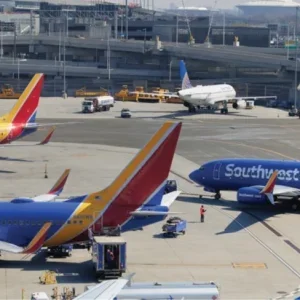Operations at Jomo Kenyatta International Airport are back to normal.
So far, gates 4 to 14 have been reopened for use in the International Departures. Domestic flight operations have also been restored back to the airport’s Unit 3 from the Cargo Village, where they were moved after the fire.
Traffic at the JKIA, during the months of August and September averaged 400,000 passengers per month similar to the figures experienced on the same months last year.
Improved passenger processes
The dark cloud that was the fire that razed part of JKIA also had a silver lining. In the renovation work that has been ongoing, Kenya Airports Authority got an opportunity to refine and improve passenger handling processes at the airport.
Among the improvements introduced in the functioning of the airport, regards security. KAA has effectively managed to separate international arrivals and departures by situating them in separate buildings. Now, passengers departing from JKIA and those arriving do not mix, as was previously the case.
KAA has also succeeded in decongesting the airport. With the JKIA parking garage currently being used as a temporary arrivals terminal, all available gates (4 – 14) are now being used for departures, which means less congestion for passengers.
In addition to this, passengers travelling through JKIA are now enjoying significantly improved comfort, since commercial space has since been recovered from previous tenants with expired leases, freeing more space for passenger movement.
For the arriving international passengers, immigration facilities have been modernized and expanded. There are now 20 Immigration counters, up from the previous 16, with enough officers to man the counters depending on the number of arriving passengers.
The location of the Immigration Desk next to the Baggage Belts, has markedly improved passenger processing time. This compares well with the normal standard as recommended by the International Civil Aviation Organisation (ICAO) from ‘Chocks On’ (when the pilot stops the plane) to ‘when the passenger collects his luggage is 45 minutes. The JKIA is now doing 25 minutes for Business Class passengers and an average of 35 minutes for Economy Class passengers.
During the course of the renovation, several valuable lessons have been learnt that will be important in designing future terminals. As part of the recovery the Authority has in place a medium term programme in place that includes:
- Temporary terminal: With a capacity of 2.5 million passengers annually, this terminal is expected to be in place by January 2014 and is aimed at decongesting JKIA. The project is funded by AFDB and advertisements were put out on September 20;
- Busing gate (to provide busing gates to serve remote stands): Unit 3 Level 1 Lounges (additional lounges for departing and transiting passengers as well as business class lounges), and Unit 3 Temporary arrivals terminal (to allow us revert the JKIA Parking Garage to its original use) – These three projects, which are all funded by the World Bank, were advertised on September 27; Works should be complete in four months after contract award.
- Terminal 4: works are ongoing towards having the building ready for partial opening by December 2013.
Long term plans
Following on from this, the intention is to ensure a lasting impact and legacy. In the long term, this includes:
- Greenfield Terminal: Ground breaking for this new terminal is expected on December 2013. On completion, will be able to handle 20 million passengers per annum. Discussions are at advanced stage for a commercial loan for 85% funding. The remaining 15% will be from KAA.
- Redesign of Unit 1, 2 and 3: This is aimed at modernizing and upgrading the current JKIA terminal with the inclusion of the impact of the fire. Initial structural investigations reveal that the Arrivals Terminal building structural integrity is unstable and recommends demolition. The preliminary design will be ready by October 15 2013.






